If you’re on the hunt for a hearty yet exotic dish that’ll transport your taste buds to a world of flavors, look no further than the classic Kedgeree recipe. This culinary delight hails from the colonial era when the British and Indian cuisines harmoniously collided. Imagine the subtle aroma of spices dancing in the air as you dive into a plate of perfectly cooked rice, delicate fish, and a symphony of herbs and spices. In this article, we’ll take you on a journey to master the art of creating this delectable dish that marries the best of British and Indian culinary traditions. Get ready to awaken your inner chef and impress your loved ones with a Kedgeree dish that’s bound to become a household favorite.
[ez-toc]
History
The history of Kedgeree is a tantalizing tale that takes us back to the colonial era, a time of cultural exchange and culinary exploration. This beloved dish, now considered a British classic, owes its existence to the intermingling of Indian and British cuisines during the British colonial rule in India.
The origins of Kedgeree can be traced to “Khichri,” an Indian dish made from rice and lentils, often flavored with spices. Khichri was a staple in Indian households, renowned for its simplicity and nourishing qualities. As the British colonials settled in India, they were introduced to the exotic flavors of Indian cuisine, including Khichri.
The transformation of Khichri into Kedgeree is a result of the British penchant for adapting and incorporating foreign elements into their culinary traditions. The colonial British sought comfort in familiar ingredients and techniques while embracing the novel spices and ingredients they encountered in India. The Indian Khichri became a canvas for experimentation, leading to the birth of Kedgeree.
The earliest documented instances of Kedgeree date back to the 18th century when the British presence in India was at its zenith. The dish’s popularity grew as British travelers and officials returning from India brought back their newfound love for Kedgeree. By the mid-19th century, Kedgeree had firmly established itself as a breakfast dish in Britain.
The dish’s evolution wasn’t limited to geographical boundaries. Just as India provided an abundance of spices and flavors, British kitchens introduced their own twists to Kedgeree. Smoked fish, particularly haddock, emerged as a prominent ingredient in the British version. This not only added a distinct smokiness but also incorporated the British love for seafood.
The Victorian era witnessed Kedgeree’s prominence on breakfast tables across Britain. Its popularity extended beyond the colonial elite and found its way into mainstream households. Cookbooks of the era often featured Kedgeree recipes, each with its unique interpretation of the dish.
Kedgeree’s versatility played a pivotal role in its continued fame. It transitioned effortlessly from a hearty breakfast to an elegant brunch and even a sophisticated dinner party entrée. The dish’s adaptability allowed it to cater to various occasions and settings, solidifying its position in British culinary culture.
As time marched on, Kedgeree continued to evolve. The 20th and 21st centuries witnessed culinary experimentation that brought forth modern variations of the dish. Contemporary chefs and home cooks have embraced Kedgeree as a canvas for innovation, introducing ingredients like salmon, quinoa, and even tofu to cater to diverse dietary preferences.
Time
| Cooking Step | Preparation Time |
|---|---|
| Soaking Basmati Rice | 15 minutes |
| Poaching Fish | 20 minutes |
| Sautéing Onions and Spices | 10 minutes |
| Cooking Rice with Fish Stock | 15 minutes |
| Flaking Fish and Scrambling Eggs | 10 minutes |
| Assembling Kedgeree | 5 minutes |
| Total Estimated Time | 75 minutes |
Preparing the perfect Kedgeree involves a series of steps that come together to create a symphony of flavors. From soaking the rice to the final assembly, each stage contributes to the delightful experience of savoring this fusion dish. Keep in mind that while the total estimated time is around 75 minutes, the journey is just as rewarding as the destination. So, roll up your sleeves and let’s embark on a culinary adventure!
Ingredients
| Ingredients | Quantity for 2 Servings |
|---|---|
| Smoked Haddock | 200 grams |
| Basmati Rice | 1 cup |
| Eggs | 2 |
| Onion | 1 medium-sized |
| Curry Powder | 1 teaspoon |
| Turmeric Powder | 1/2 teaspoon |
| Cumin Powder | 1/2 teaspoon |
| Fresh Cilantro | A handful |
| Lemon | 1 |
| Milk | 1/2 cup |
| Bay Leaves | 2 |
| Black Peppercorns | 4-5 |
| Fish Stock | 1 cup |
| Salt and Pepper | To taste |
| Butter or Oil | For sautéing |
Here’s a handy list of the essential ingredients you’ll need to prepare a delightful Kedgeree for two people. Gather these components, and you’ll be well on your way to creating a masterpiece that’ll tantalize your taste buds!
Directions
Step 1: Poaching the Smoked Haddock
- In a saucepan, combine 200 grams of smoked haddock with 1/2 cup of milk, 2 bay leaves, and 4-5 black peppercorns.
- Bring the mixture to a gentle simmer over medium heat. Let the haddock poach for about 15-20 minutes, until it’s tender and infused with a smoky aroma.
- Once done, remove the haddock from the milk, let it cool slightly, and then carefully flake it into bite-sized pieces. Set aside.
Step 2: Preparing the Rice
- Rinse 1 cup of Basmati rice thoroughly until the water runs clear. This removes excess starch and ensures perfectly separated grains.
- Soak the rice in water for approximately 15 minutes to allow it to absorb moisture and achieve the desired texture.
Step 3: Sautéing Onions and Creating Flavorful Spice Mix
- Finely chop 1 medium-sized onion and set it aside.
- In a pan, heat a bit of butter or oil and sauté the chopped onion until it becomes translucent and slightly golden.
- Add 1 teaspoon of curry powder, 1/2 teaspoon of turmeric powder, and 1/2 teaspoon of cumin powder to the pan. Stir well to release the fragrant spices.
Step 4: Cooking the Rice and Flavors
- Drain the soaked rice and add it to the sautéed spices. Stir to coat the rice with the flavorful mixture.
- Pour in 1 cup of fish stock and let the rice absorb the flavors. Allow it to cook for approximately 15 minutes, or until the rice is cooked and fluffy.
Step 5: Adding the Finishing Touches
- Gently fold the flaked smoked haddock into the cooked rice, ensuring an even distribution of flavors.
- In a separate bowl, whisk 2 eggs and scramble them in a pan until they’re just cooked. Add the scrambled eggs to the rice and fish mixture.
Step 6: Garnishing and Serving
- Chop a handful of fresh cilantro and squeeze the juice of 1 lemon.
- Sprinkle the chopped cilantro over the Kedgeree for a burst of freshness and drizzle with lemon juice to enhance the flavors.
Step 7: Time to Indulge
- Carefully mix all the ingredients together in the pan, ensuring they’re well combined.
- Serve the Kedgeree in plates or bowls, garnished with extra cilantro and lemon wedges.
Congratulations! You’ve successfully crafted a Kedgeree masterpiece that’s a fusion of enticing flavors and textures. Now, it’s time to sit back, relax, and relish every bite of this harmonious blend of Indian spices and British elegance. Enjoy your culinary creation and the stories it carries with every forkful.
Equipment Required
Nutrition Information
| Nutrition Information | Per Serving (2 servings) |
|---|---|
| Serving Size | 1 plate |
| Calories | 350 |
| Total Fat | 12g |
| – Saturated Fat | 3g |
| Protein | 22g |
| Carbohydrates | 40g |
| – Dietary Fiber | 2g |
| – Sugars | 2g |
| Cholesterol | 195mg |
| Sodium | 420mg |
| Vitamin D | 30% DV |
| Calcium | 15% DV |
| Iron | 20% DV |
| Potassium | 10% DV |
Please note that these nutritional values are approximate and may vary based on specific ingredients and portion sizes. Enjoy your Kedgeree while delighting in the flavors and nourishing your body!
Tips
- Choose Quality Fish: Opt for the freshest smoked haddock or fish of your choice. The quality of the fish will significantly impact the final flavors of your Kedgeree.
- Balancing Spices: Feel free to adjust the spice quantities according to your taste preferences. Add a pinch of red chili flakes for a touch of heat or a dash of ground coriander for an aromatic twist.
- Flavorful Rice: For fragrant and fluffy rice, ensure you rinse and soak the Basmati rice before cooking. This step ensures the rice doesn’t become mushy and each grain stands out.
- Perfectly Poached Fish: Poaching the haddock in milk adds a delicate smokiness. Ensure the heat is gentle to avoid overcooking and losing the distinct flavor of the fish.
- Egg Elegance: Scramble the eggs gently and ensure they are slightly undercooked when added to the Kedgeree mixture. They’ll continue cooking as you fold them in.
- Herbaceous Magic: Fresh cilantro adds a burst of freshness. If you’re not a fan, consider using fresh parsley or even mint for a unique twist.
- Lemon Zest and Zing: Grate the lemon zest before squeezing the juice. Adding a bit of zest to the Kedgeree will enhance the citrusy aroma.
- Mindful Mixing: When combining the ingredients, be gentle to avoid breaking the delicate fish flakes and scrambled eggs.
Pros & Cons
| Pros | Cons |
|---|---|
| ✅ Flavorful fusion of spices and fish. | ❌ Requires multiple steps and time for preparation. |
| ✅ Offers a balanced blend of proteins and carbs. | ❌ Smoked haddock may not be readily available in some areas. |
| ✅ Customizable with variations and substitutions. | ❌ Not suitable for vegans or individuals with fish allergies. |
| ✅ Showcases a harmonious mix of Indian and British cuisine. | ❌ Fish poaching can be a delicate process that requires attention. |
| ✅ Can be served as a hearty breakfast, brunch, or dinner. | ❌ Some might find the spice level too mild or intense. |
Conclusion
As we bring our culinary journey to a close, we find ourselves immersed in the world of Kedgeree, a dish that transcends time, borders, and palates. This fusion of British elegance and Indian spices offers a symphony of flavors that will not only tantalize your taste buds but also take you on a journey through history. From the colonial era to your kitchen, Kedgeree is a testament to the power of culinary fusion and adaptation.
With delicate flakes of smoked haddock, aromatic spices, and fluffy Basmati rice, Kedgeree invites you to savor each bite and relish the stories it carries. Whether you’re a seasoned home cook or a curious culinary explorer, this recipe offers an opportunity to create a masterpiece that resonates with your unique tastes.
As you follow the steps, soaking in the aroma of spices, poaching the fish, and embracing the blend of flavors, remember that every Kedgeree plate holds more than just a dish—it holds the spirit of cultural exchange, the essence of innovation, and the joy of sharing a delightful meal with loved ones.
So, don your apron, gather the ingredients, and embark on a Kedgeree adventure that promises to awaken your inner chef. Explore variations, unleash your creativity, and craft a dish that embodies your culinary spirit. With every spoonful, you’ll not only savor the flavors but also become part of the rich tapestry that Kedgeree weaves—a tapestry that connects tradition and innovation in a dance of taste and nostalgia.
Allow Kedgeree to remind you that food is not just sustenance; it’s a journey, a memory, and an experience. It’s an invitation to explore the world through flavors, and what better way to start than with the enchanting Kedgeree? So, let your taste buds guide you, your culinary curiosity drive you, and your kitchen become a canvas for unforgettable moments. Ready, set, cook, and savor the magic of Kedgeree! 🍽️🌍🎨
Facts
- Fact 1: 🌏 The Colonial Flair
- Did you know that Kedgeree’s roots trace back to the colonial era, when the British and Indian cuisines did the tango? This dish emerged as a delightful result of their flavorful dance, fusing the best of both worlds onto your plate.
- Fact 2: 🐟 The Smokey Tale
- Smoked haddock is the traditional star of Kedgeree. But did you know that in the 19th century, it was known as “finnan haddie”? This Scottish fish brought its smoky charm to the dish, making it a beloved ingredient.
- Fact 3: 🔮 The Versatile Victorian Era
- During the Victorian era, Kedgeree was more than just a dish—it was a culinary chameleon! It transformed from a hearty breakfast to a brunch centerpiece and even a fancy dinner party delight. Talk about a versatile star!
- Fact 4: 🎉 Kedgeree and the Raj
- Picture this: elegant brunches under the Indian sun, colonial officers in crisp uniforms, and Kedgeree gracing the table. This dish became synonymous with the British Raj, making it a culinary time traveler that brings history to life.
- Fact 5: 🍽️ The Fusion Playground
- Kedgeree isn’t just a recipe; it’s a playground for culinary fusion. From swapping fish to exploring vegan variations, it encourages your creativity to run wild. Who knew a single dish could be the canvas for endless taste adventures?
FAQ’s
What is Kedgeree, and where does it originate from?
Kedgeree is a dish that originated during the British colonial era in India. It’s a fusion of Indian and British cuisines, combining rice, smoked fish, and aromatic spices.
Can I use a different type of fish instead of smoked haddock?
Absolutely! While smoked haddock is traditional, you can experiment with other fish like salmon, cod, or even shrimp to create your unique twist on Kedgeree.
Is Kedgeree a breakfast dish or suitable for other meals?
Kedgeree is incredibly versatile! Traditionally considered a breakfast dish, it can also be enjoyed as brunch, lunch, or dinner, adapting beautifully to various occasions.
I’m a vegetarian. Can I make a vegetarian version of Kedgeree?
Certainly! Swap the fish with ingredients like pan-fried tofu, tempeh, or a medley of sautéed vegetables for a flavorful vegetarian Kedgeree.
What type of rice is best for Kedgeree?
Basmati rice is the preferred choice for Kedgeree due to its aromatic and fluffy texture. Rinse and soak it before cooking for the best results.
Can I make Kedgeree in advance and reheat it?
While freshly made Kedgeree is always delightful, you can certainly make it in advance and reheat it gently. Add a splash of water or broth to prevent it from drying out during reheating.
How do I adjust the spice level to my preference?
Feel free to tweak the spice quantities based on your taste. If you prefer a milder dish, reduce the amount of spices, or add a touch of red chili flakes for more heat.
Are there any dairy-free alternatives for poaching the fish?
Instead of milk, you can use coconut milk or a vegetable broth to poach the fish. This adds a unique twist to the dish while keeping it dairy-free.
Can I freeze leftover Kedgeree?
Yes, you can freeze leftover Kedgeree for up to three months. Portion it into airtight containers and thaw it in the refrigerator before reheating.
What makes Kedgeree a nostalgic dish?
Kedgeree carries with it a sense of history and nostalgia, reminding us of the colonial era and the exchange of cultures. It’s a culinary journey that evokes both comfort and curiosity, making every bite a delicious exploration of flavors and stories.




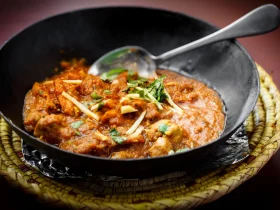

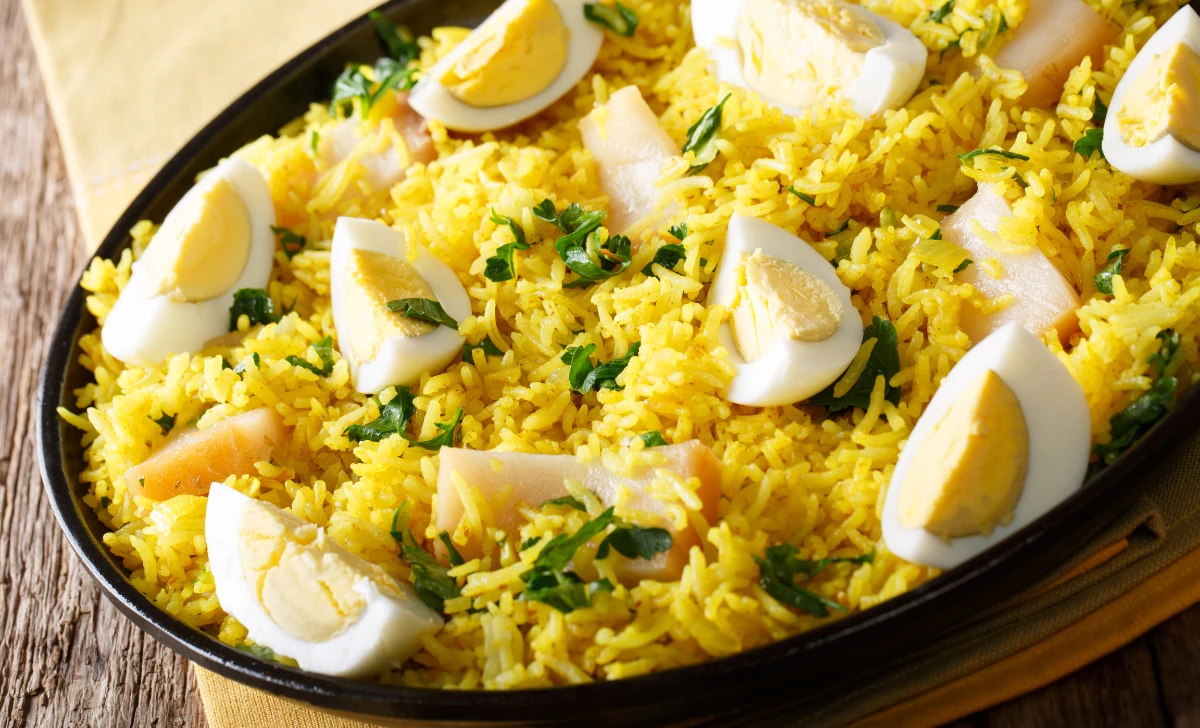

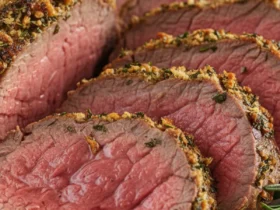
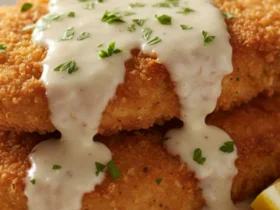

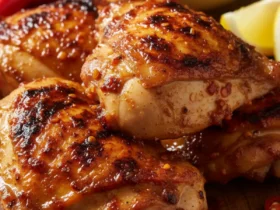
Leave a Review